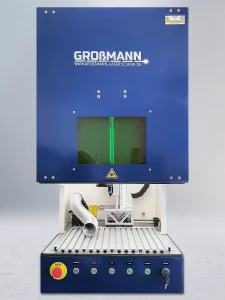Laser engrave & personalize glass
The art of Glass engraving by laser has undergone a remarkable evolution in recent years thanks to modern technologies. While CO2 laser often considered the first choice for glass engraving, have UV laser lasers have recently gained in importance due to their precision and versatility. In this article, we take a look at the benefits of UV lasers and why
CO2 laser - A proven option for glass engraving
CO2 lasers have long been the most popular choice for Glass engravings have been. They offer consistent engravings and work at a wavelength that processes the glass without damaging or breaking it. Unfortunately, the results here are not as high-contrast as with a UV laser system and are easily chipped.
UV lasers - precision and fineness
Compared to the CO2 laser, the UV laser offers clear advantages. Thanks to its short wavelength, it can produce extremely fine and detailed engravings on glass, which makes it particularly suitable for complex and intricate designs. The UV laser also minimizes the risk of glass breakage as it works at lower temperatures.
The importance of the right settings
Each type and thickness of glass requires specific settings in order to achieve optimum results. This is where the quality of our Laser marking devices. Our Laser systems are equipped with advanced software that enables precise adjustment of the settings.
Conclusion
While both Laser types have their own strengths, UV lasers offer remarkable precision and versatility in glass engraving. If you are looking for the highest quality and support, you will find it with us.

Buy marking lasers for laser engraving on glass
The safe ALL-IN-ONE laser marking device for glass engraving

The GRAVIS laser marker as a complete solution.
Thanks to the modern UV laser technology can be used with the Gravis produce precise, high-contrast laser markings and laser engravings on glass.
Optionally available in Laser protection class 1 or 2, this laser marking device offers a reliable solution for many applications.
Thanks to the optional X-axis, large marking fields can be realized even with small optics, perfect for series production.
